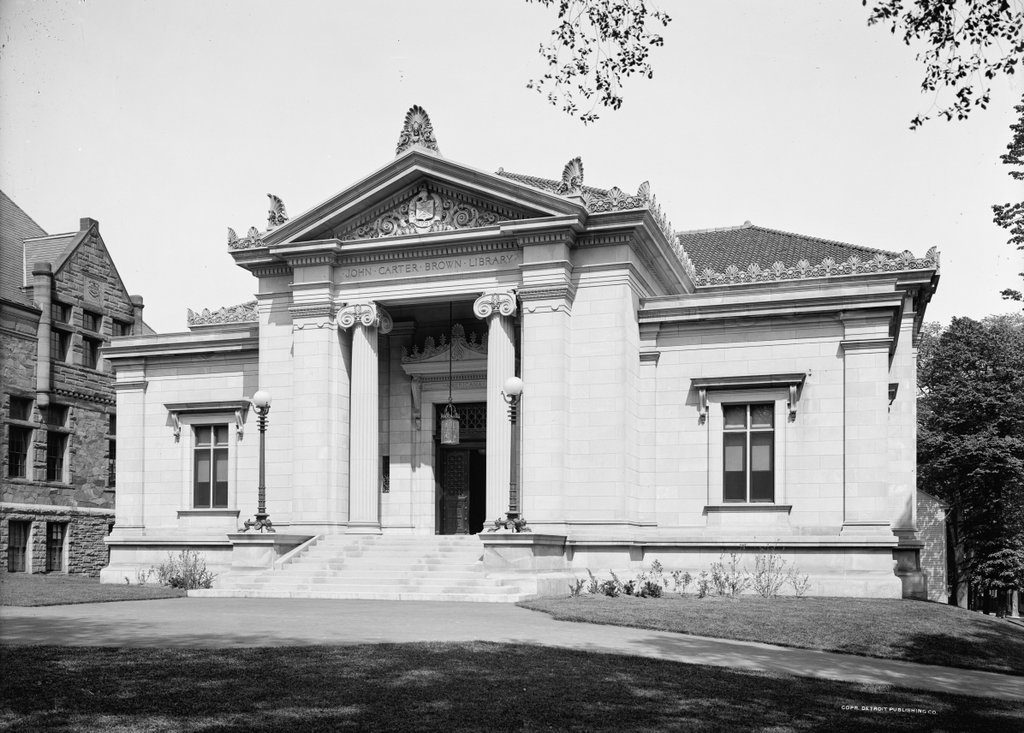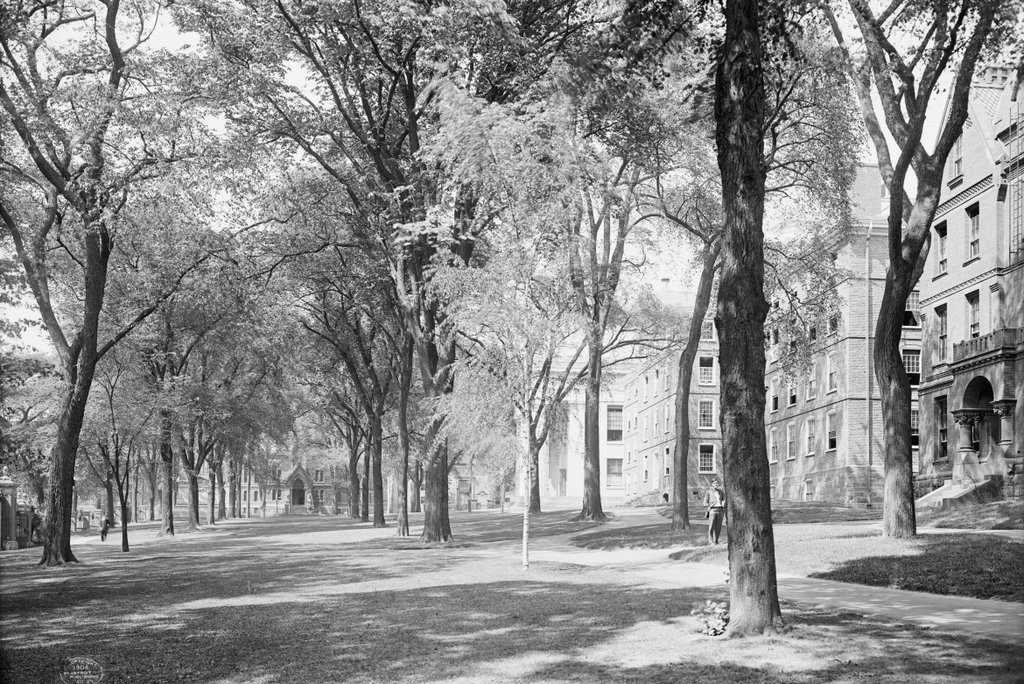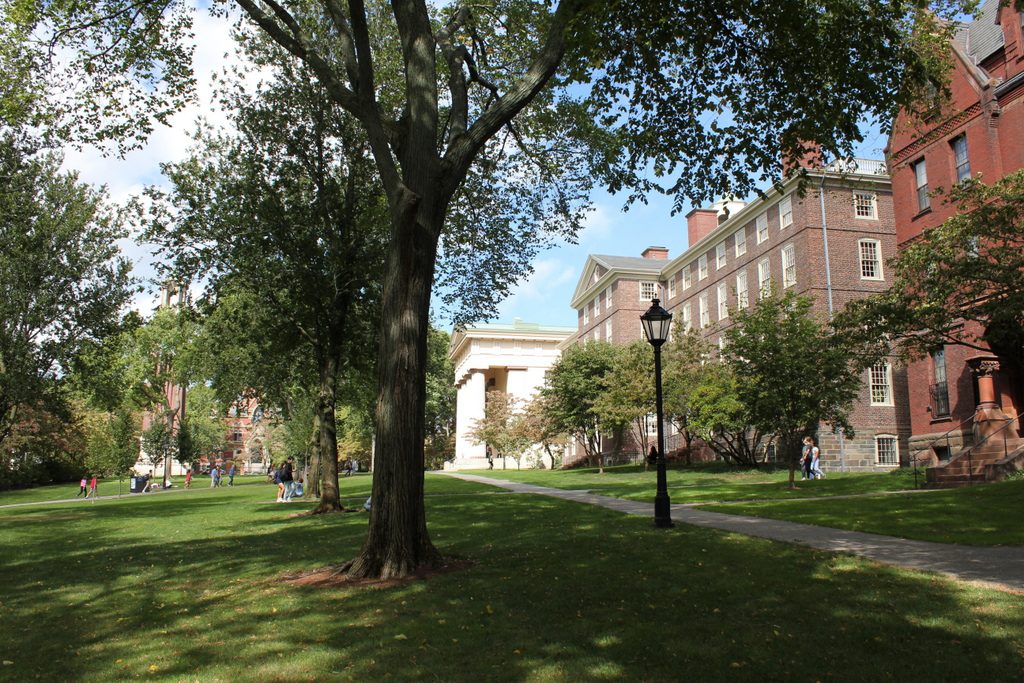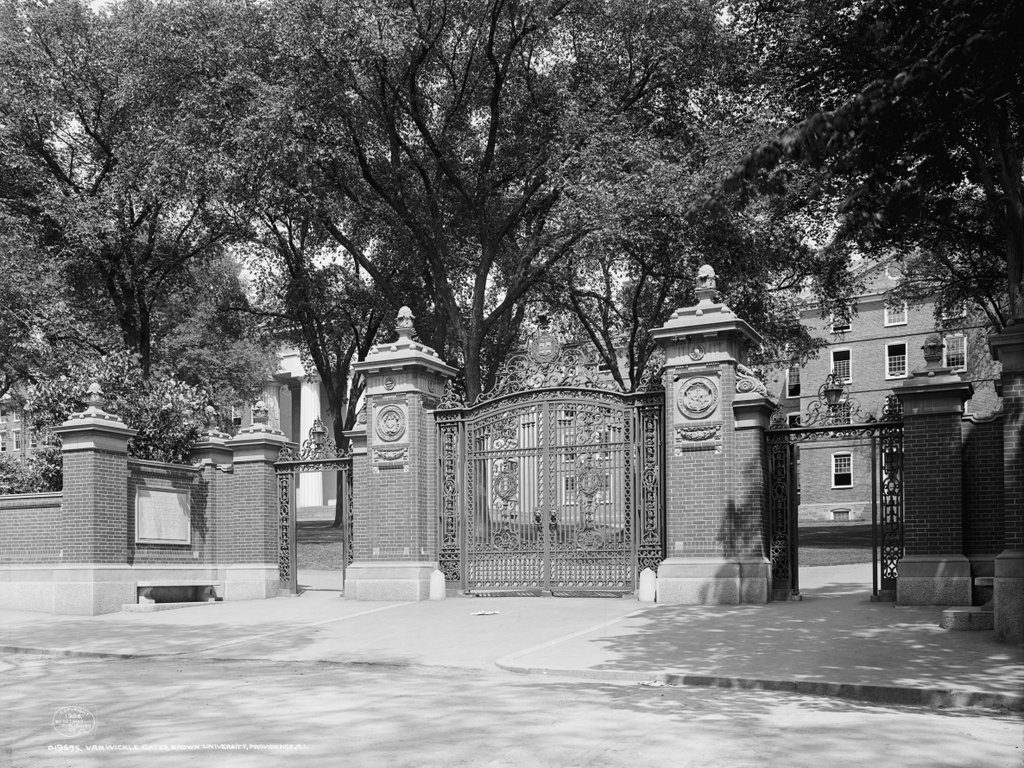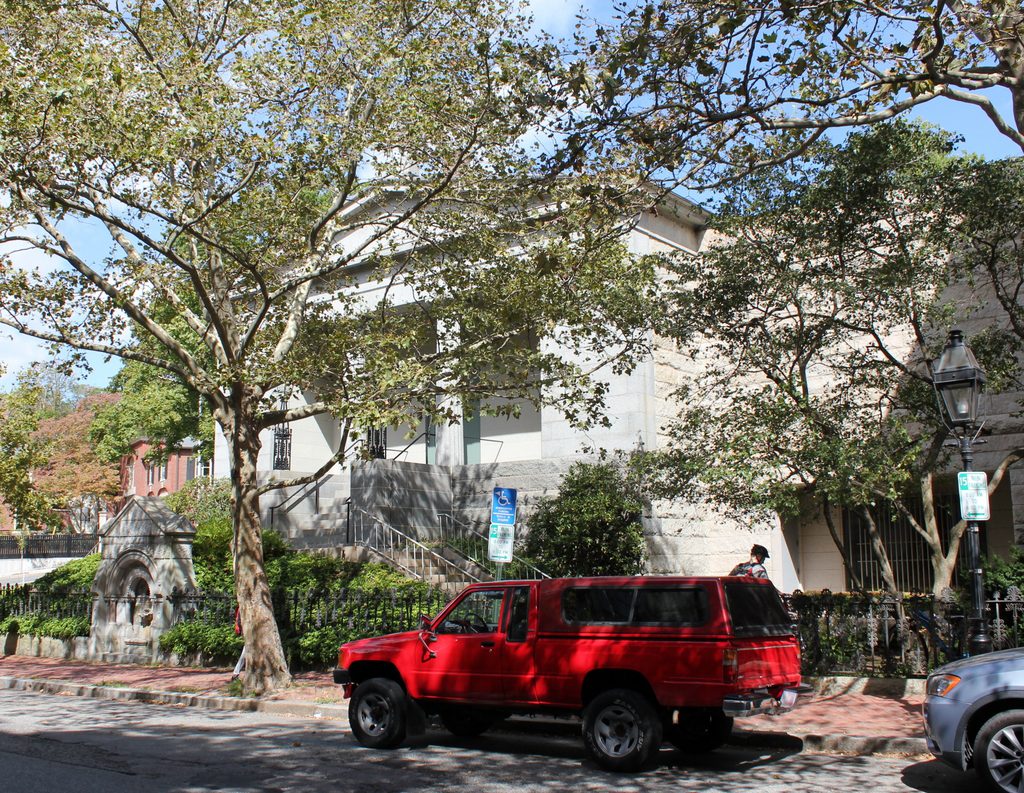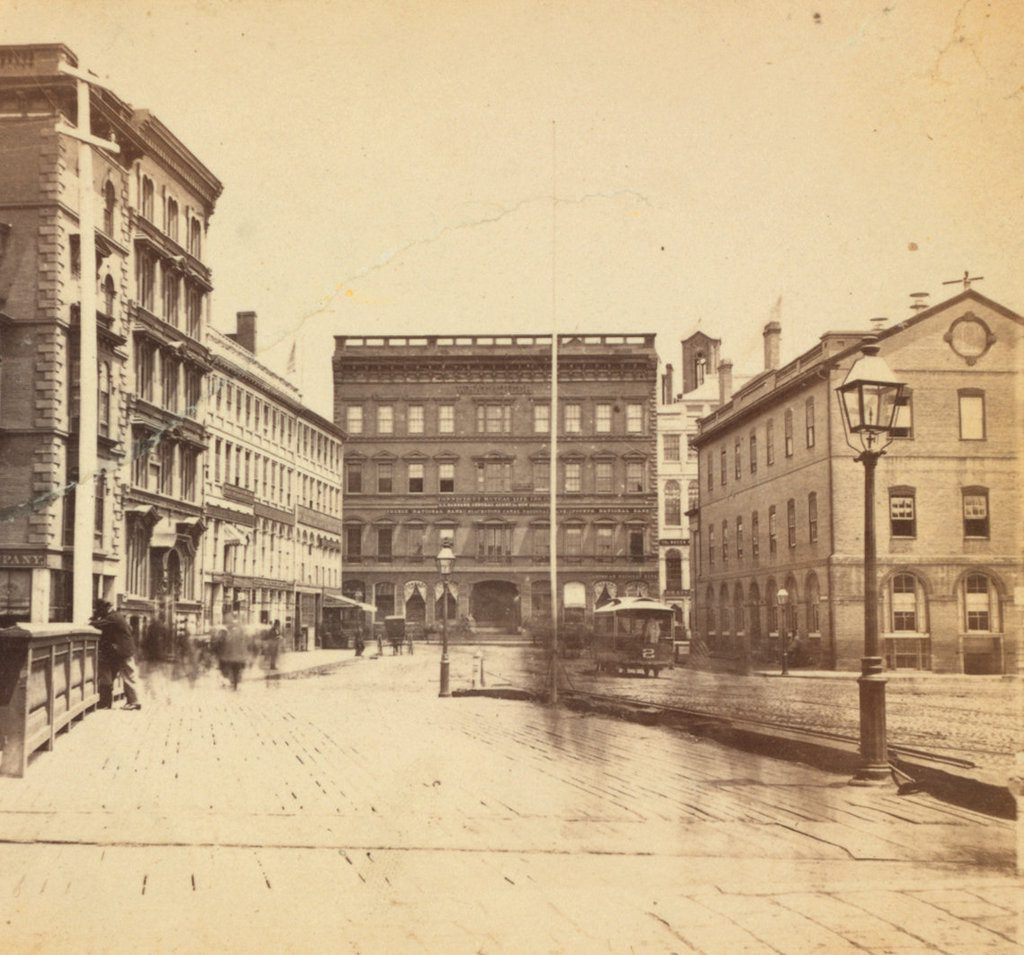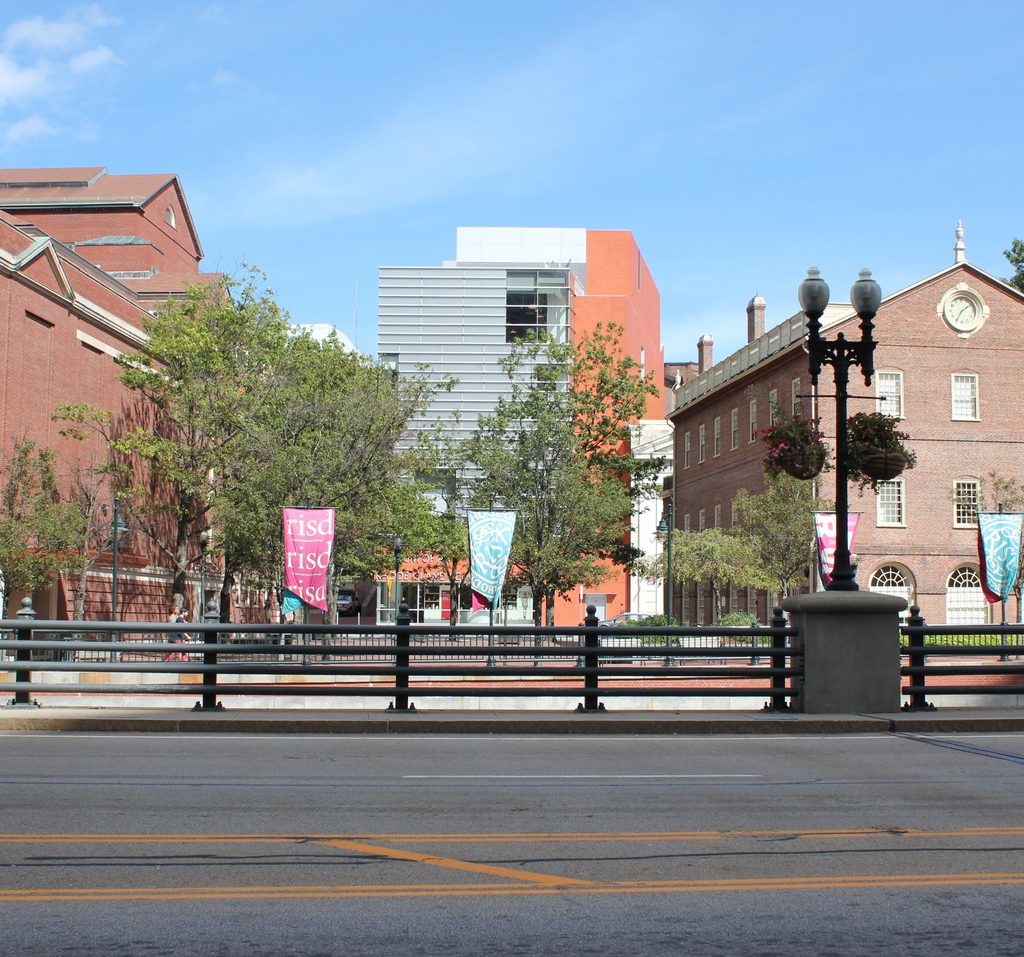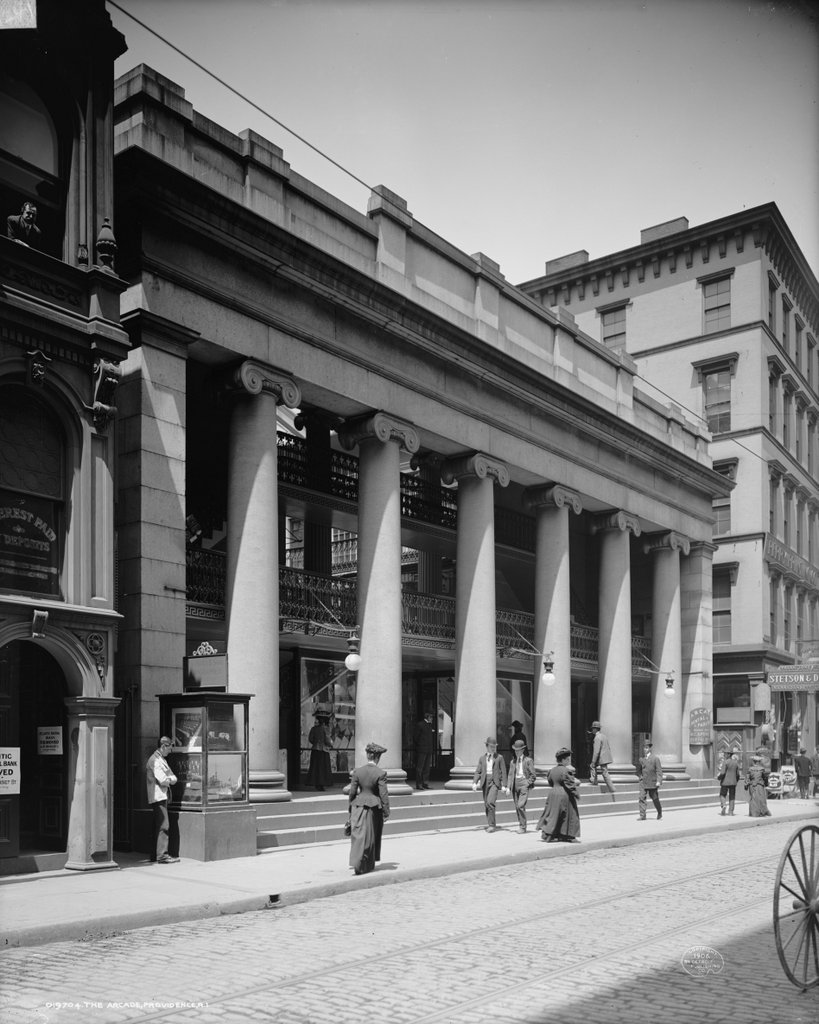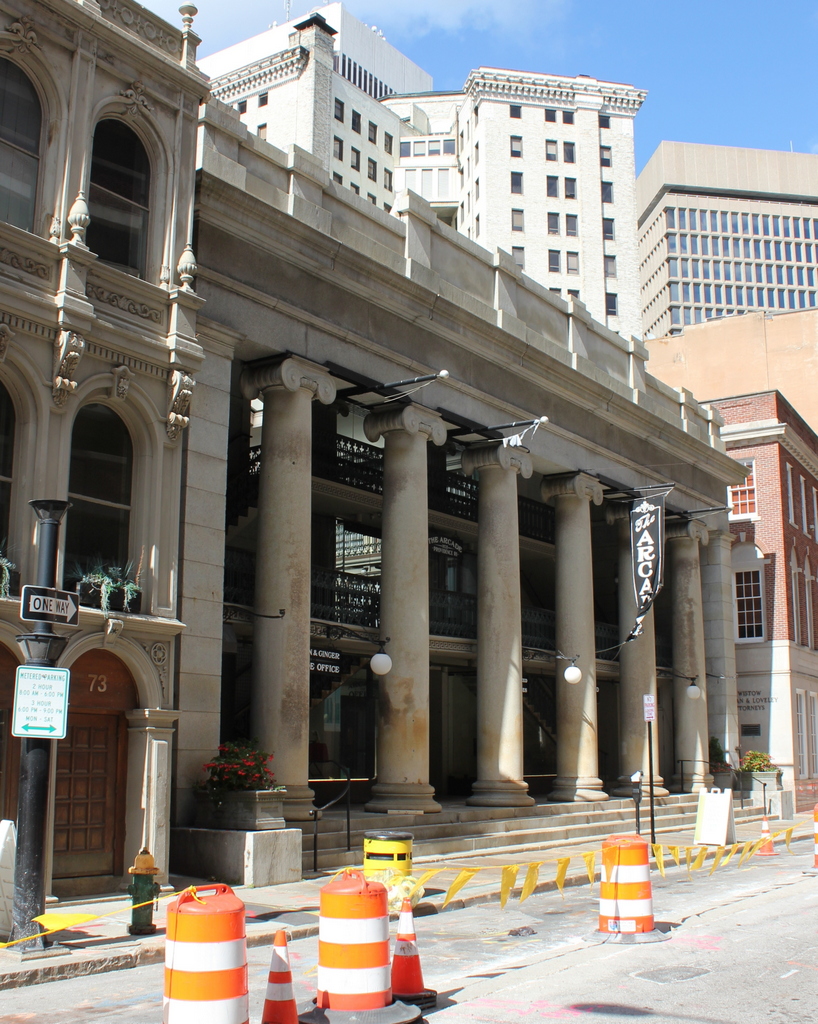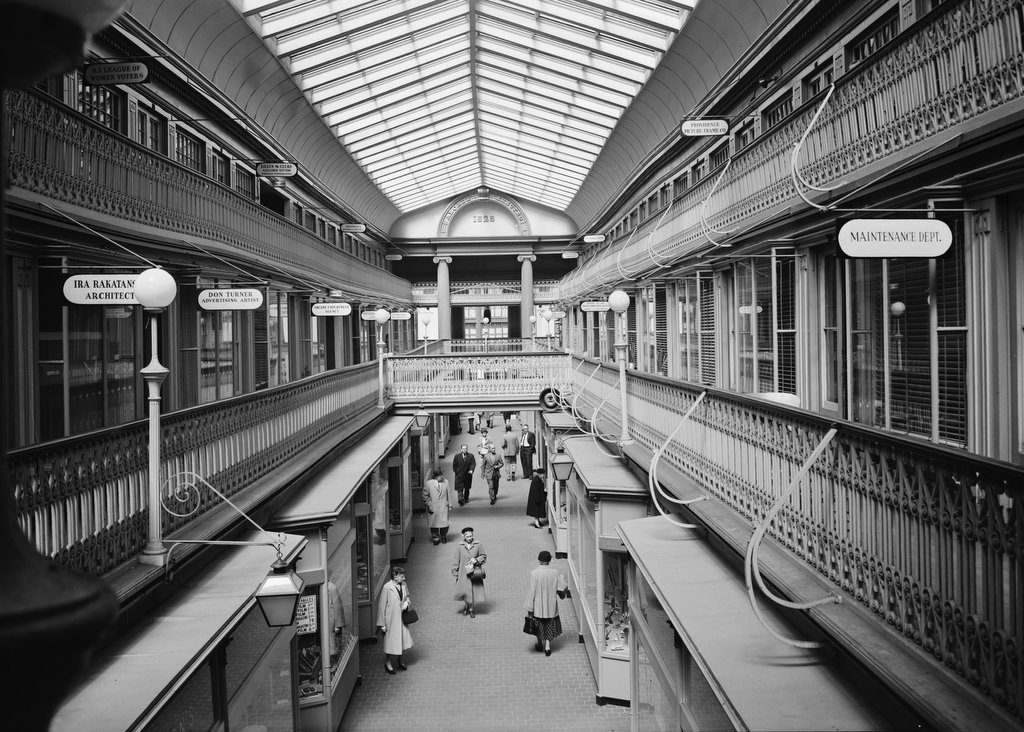The John Carter Brown Library on the campus of Brown University, around 1906. Image courtesy of the Library of Congress, Detroit Publishing Company Collection.
The library in 2016:

The John Carter Brown Library is one of seven libraries at Brown University, featuring an extensive collection of rare, colonial-era books published in the Americas. Its origins trace back to the private collection of John Carter Brown, who was a member of Providence’s prominent Brown family. His father, Nicholas Brown, Jr., was the donor for whom the school was named, and many other family members played an important role in the founding and development of the school.
After his death in 1874, John Carter Brown left his collection to his son, John Nicholas Brown. He, in turn, left instructions in his will to establish a library with the collection, to be named in memory of his father. Although his will did not stipulate a location, the library trustees chose Brown University, and it opened in 1904, four years after his death.
Like many other early 20th century libraries, the building is an example of Beaux-Arts architecture, and was designed by Shepley, Rutan & Coolidge, the firm that would go on to design Brown’s John Hay Library a few years later. The library’s opening in the spring of 1904 coincided with the completion of a nearby gate, which was donated by John Nicholas Brown’s widow and named for her late husband.
Today, the front facade of the library is unchanged from the first photo, but its holdings have significantly increased over the years. A new addition was completed in 1990, and named the Caspersen Building in honor of the parents of its benefactor, Finn M. W. Caspersen. The library now has over 50,000 books from the 19th century and earlier, along with thousands of rare maps, prints, manuscripts, and other documents.

